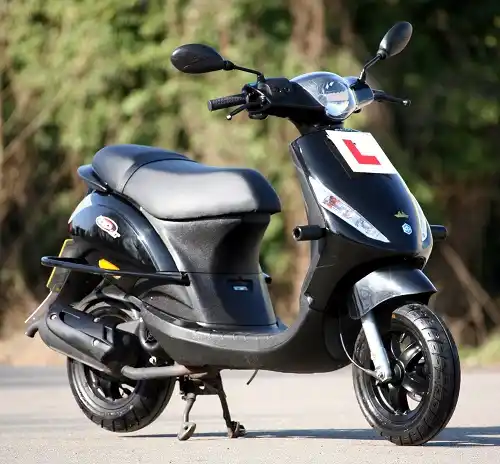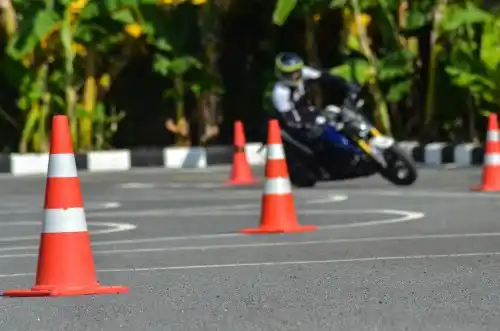Book motorcycle training in Malmesbury, Wiltshire with any of the companies listed here
Click on any of the motorcycle training schools below to view more information and check availability.
Moto vation Chippenham
24 Webbs Court, Chippenham, Wiltshire, SN15 4TR
Approx. distance: 7.8 miles
Phoenix Motorcycle Training Chippenham
Chippenham Rugby Club, Chippenham, Wiltshire, SN14 0YZ
Approx. distance: 8.6 miles
Phoenix Motorcycle Training Swindon
Royal Wotton Bassett Sports Assocition, Brinkworth Road, Royal Wootton Bassett, Swindon, Wiltshire, SN4 8DS
Approx. distance: 8.9 miles
Direct Rider Training Swindon
Link Centre, Whitehill Way, Westlea, Swindon, SN5 7DL
Approx. distance: 12 miles
Abbey Rider Training Swindon
Abbey Stadium, Swindon, Wiltshire, SN25 4DN
Approx. distance: 13.5 miles
Lightning Motorcycle Training Swindon
Swindon Town FC, County Road, Swindon, Wiltshire, SN1 2ED
Approx. distance: 14.5 miles
Riding in Action Swindon
Wroughton Airfield, Wroughton, Swindon, SN4 0QT
Approx. distance: 14.7 miles
The Bike School Devizes
Cannings Hill, Devizes, Wiltshire, SN10 2JG
Approx. distance: 16.3 miles
Phoenix Motorcycle Training Bath
Walcot Rugby Club, Albert Fields, Landsdown Road, Bath, BA1 9BJ
Approx. distance: 17.2 miles
Stella Motorcycle Training Hardwicke
Green Lane, Hardwicke, Gloucester, Gloucestershire, GL2 4QA
Approx. distance: 17.7 miles

Find motorcycle training in Malmesbury, Wiltshire
If you are looking for motorcycle training in Malmesbury then look no further! We have all the information here for you to find suitable motorcycle training and testing close to you or in the surrounding areas of Tetbury, Chippenham and Nailsworth.
What are the different types of motorcycle licence I can get in Malmesbury?
There are 4 main types of full motorcycle licence issued by the DVSA. The first three (AM, A1 and A2 motorcycle licences) have restrictions on the type of moped or motorcycle you can ride, the fourth (the full A motorcycle licence) has no restrictions.
The AM restricted moped licence
The A1 restricted motorcycle licence
The minimum age to take this test is 17. According to the DVSA website it will allow you to ride a "Light motorcycle up to 11 kW (and a power-to-weight ratio not more than 0.1 kW per kg) and 125 cc". This means it's up to a 125 cc motorcycle with some restrictions to make sure it cannot accelerate too fast - a really good idea when you are new to riding a motorbike!
Requirements to take the A1 motorcycle test - You must have a UK provisional or full driving licence, a valid theory test certificate and a valid CBT certificate. Once you have taken this test you will not have to keep renewing your CBT certificate every 2 years, you can ride on motorways and you can take a pillion passenger on the back of your motorbike.
The A2 restricted motorcycle licence
For this licence you need to be at least 19 years of age, have completed your CBT or have had an A1 licence for at least 2 years. As with the A1 test you also need to have a UK provisional or full driving licence and a valid theory test certificate . The main benefit of getting an A2 licence is you can ride a more powerful motorcycle. The law states a "standard motorcycle up to 35 kW (and a power-to-weight ratio not more than 0.2 kW per kg)". So it's a more powerful bike, but still not completely un-restricted. To find A2 legal motorbikes you are best visiting your local motorcycle dealer and asking them to show you the A2 legal bikes, as otherwise it's very difficult to work out just looking at the tech specs.
The full A motorcycle licence, or DAS licence.
This is the licence that allows you to ride almost any motorcycle without restrictions, so it's the ultimate motorcycle licence. No limits on power outputs or power per kg or engine size! It is also called a 'DAS' licence as it can be obtained from the 'Direct AccesS' route. There are two ways you can get this licence:
1) If you are 24 or over you can take the tests for an A licence. You must also have a UK provisional or full driving licence, a valid theory test certificate and a valid CBT certificate.
2) If you are at least 21 years of age and you have held an A2 category licence for at least 2 years. This is sometimes referred to as the 'progressive access' route as you progress from one licence to another.
When taking the test the biggest difference is that you have to use a bigger, more powerful motorcycle. It will have a power of at least 40kw and an engine cc of at least 595 cc. Your local training school will make sure you have the right size bike for your test.
There is also a flowchart (click here) that the DVLA have produced that shows these different licences and how to obtain them.
To get more detailed guidance on what licence is right for you then talk to your local motorcycle training school. You can search for them here and they are qualified to speak to you on the right type of training for you.
How do I get the right training in Malmesbury for the A2 motorcycle licence?
The A2 motorcycle licence is a restricted licence you can get when you are 19 or over. It is popular amongst 19 to 24 year olds as it is the only licence that allows you to get on a more powerful motorcycle at that age. It is essential that you get the right training for this licence as without it you are likely to hurt yourself or even worse, someone else. Use this websiteto enter your postcode and search for your local motorcycle training school. They are all fully qualified to advise you on the training you will need. Although saving money is something everyone wants to do, the right training will save your life. Therefore don't just focus on price, look at the quality of training on offer and the standard of training.

What can I ride on a provisional driving licence in Malmesbury?
A provisional driving licence is not a full driving licence so you are limited in what you can ride. So, when you first come to ride a motorcycle the DVSA will issue you with a provisional driving licence. What you can ride will depend on your age.
Age 16
You must complete a CBT and then you can ride a moped or scooter up to 50 cc and with a top speed of no more than 28 mph. You must display L plates, you cannot carry a pillion passenger and you must not ride on a motorway.
Age 17 or over
You must complete a CBT and then you can ride a restricted motorcycle up to 125 cc. You must display L plates, you cannot carry a pillion passenger and you must not ride on a motorway.
Do you have a full car driving licence?
If you already have a full car driving licence then this automatically gives you provisional entitlement for riding a motorcycle. So, priovided you get your CBT certificate then you can ride a moped or motorcycle as mentioned above according to your age.
What is the DVSA Certificate Of Competence?
This certificate is awarded as part of the Enhanced Rider Scheme, often abbreviated to ERS. This scheme was devised by the DVSA and the motorcycle industry. The ERS course is run by many motorcycle training companies around the UK. It is for anyone who has a full motorcycle licence and wishes to check their safe riding skills. Not only will it make you a better rider but some insurance companies offer cheaper motorcycle insurance if you have been issued with a DVSA Certificate Of Competence. You will receive this certificate at the end of your ERS course if the instructor deems you to be a safe rider. If the instructor feels you need additional training it may be given on the day, or if it is felt you need a larger amount of training then you may need to come back on another day. Although ERS is not a test it is much like a CBT: provided you demonstrate a safe level of riding and knowledge during the day then you will be issued with your certificate. You can view a short video about ERS here